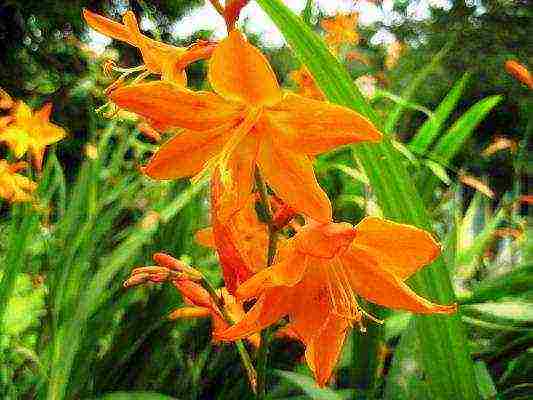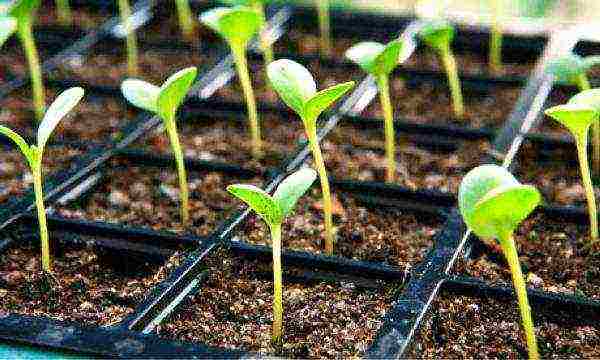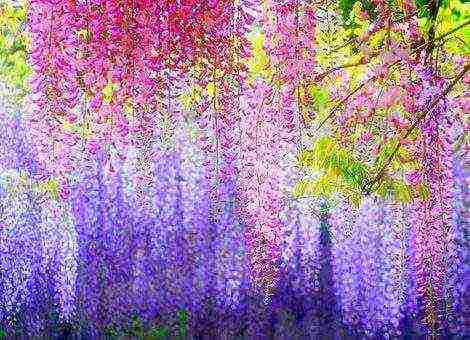Content
- 1 Views
- 2 Growing methods in the Moscow region
- 3 The choice of planting material
- 4 Popular varieties
- 5 Preparing the montbrecia bulb for outdoor planting
- 6 Landing
- 7 Care
- 8 What pests and diseases are scary
- 9 Preparation for wintering
- 10 Features of crocosmia
- 11 Growing crocosmia from seeds
- 12 Planting crocosmia in open ground
- 13 Crocosmia care in the garden
- 14 Crocosmia after flowering
- 15 Types and varieties of crocosmia with photos
- 16 Crocosmia flowers description, photo
- 17 Types and varieties of crocosmia
- 18 Growing crocosmia from seeds
- 19 Planting crocosmia in open ground in spring
- 20 Crocosmia care in the garden
- 21 Reproduction of crocosmia
- 22 Planting and caring for crocosmia in Siberia, Moscow region, in the Urals
- 23 Pests and diseases of crocosmia (treatment)
- 24 Crocosmia after flowering
- 25 How and when to harvest crocosmia seeds
- 26 Preparing crocosmia for winter
- 27 The difficulties of growing crocosmia
- 28 Forum, reviews
- 29 Crocosmia in landscape design
- 30 Video: how to properly grow and care for crocosmia
Almost every summer resident near Moscow can boast of a flower of unprecedented beauty. But to meet crocosmia (from Greek - "the smell of crocus"), she is a Japanese gladiolus or montbrecia, you can not as often as you would like. After all, this flower, reaching a height of only 1 - 1.5 m, has extraordinary beauty, has the smell of saffron and blooms for a fairly long period - from July to October. If the period of the first frost is delayed, then flowering can continue.
It is a perennial plant belonging to the bulbous family. It has densely growing branchy stems, the peduncle looks like a gladiolus, the flowers are small, only 4 cm, funnel-shaped.
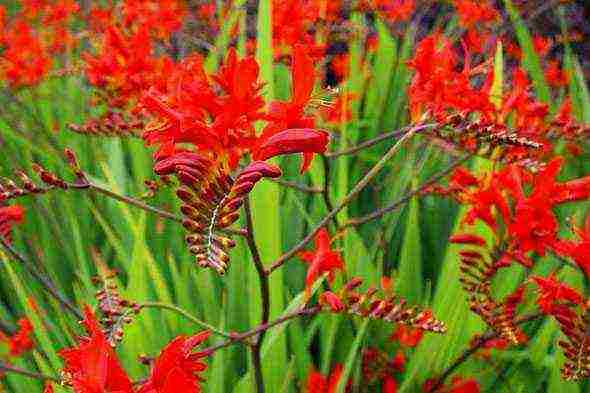
The relatives of crocosmia include irises, crocuses, gladioli.
Views
- Golden is the very first species to appear in nature, native to South Africa. The flowering period occurs in September, its leaves are linear or xiphoid, and the flowers are orange.
- Massonorum is a low-growing compact bush with ribbed xiphoid leaves and flowers, the arrangement of which resembles a brush, grows horizontally, the most cold-resistant type.
- Paniculata is an early-flowering tall species, the flowers of which form peculiar panicles.
- Crocosmia Potts - common in Africa on marshy soils.
- Ordinary - the first bred hybrid, the flowers are funnel-shaped, begins to bloom at the end of July.
Growing methods in the Moscow region
There are two ways to grow Japanese gladiolus:
- seeds,
- bulbs.
Planting in the ground is best done with ready-made seedlings. For this, crocosmia seeds are sown at the end of February, pre-soaking them in water for a day. During this time, the soil is prepared, consisting of earth, sand, humus and peat. Until the seeds germinate, they are covered with foil and placed in a warm, sunny place. Follow-up care corresponds to the cultivation of any horticultural crop, including picking.
Plants grown with seeds will be able to bloom no earlier than in 3 years.
Young babies are formed on the crocosmia bulb annually. The optimal time for planting bulbs is April-May. If the bulbs are not too large, then it is better to first plant them in a pot and grow a little at home, and then plant them in open ground. In this way, the planted flower will begin to delight its owners in the second year after planting.
The choice of planting material
When buying crocosmia bulbs, you should pay attention to their appearance. They should have a shiny, smooth surface. There should be no traces of sprout removal on them. It is worth choosing large samples.
Popular varieties
The most popular varieties of montbrecia are:
- tall frost-resistant "Lucifer", which has bright red flowers;
- undersized "George Davidson" with yellow flowers, suitable for standing in a vase as a bouquet;
- undersized "Spitfire", the flowers of which are painted in an orange shade;
- medium-sized "Mandarin Queen" with bright orange flowers;
- The "Star of the East" has apricot-colored flowers;
- Vesuvius;
- "Aurora".
Preparing the montbrecia bulb for outdoor planting
Crocosmia does not require much strength to grow and basically only needs fertile soil and regular watering. This plant will get along with any flowers, but it will look more comfortable and more profitable in a designer way in the vicinity of salvias, lilies, echinacea and cannes.
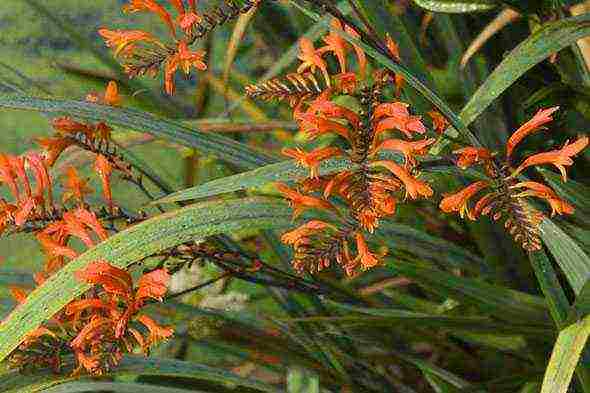
As for the landing site, it should be located in a sunny area where stagnant water cannot form.
Landing
It is necessary to plant a plant on a flower bed in the last days of April.
The preparation of the planting site is prepared in the fall by introducing humus, slaked lime, superphosphate, potassium chloride in a ratio of 200: 1: 0.4: 0.2 for each sq. M. Immediately before spring planting, 30 g of nitrogen-containing fertilizers are applied per 1 square meter of soil.
For bulbs or seedlings, holes are prepared at a distance of 10-13 cm from each other and a depth of about 10 cm. If young children are planted, then these sizes can be halved.
Before planting in the ground, the bulbs must be disinfected in a weak solution of potassium permanganate (potassium permanganate).
1 onion is planted in each hole, covered with earth, watered with a small amount of water and covered to adapt to new growing conditions.
Care
The plant needs fertilizers - every 10 - 14 days from the moment the second leaf appears, a liquid solution of a mullein is applied (for 10 liters of water, 1 liter of manure) and some kind of mineral fertilizer (for 10 liters of water, 20 g).
Water the flower once a week with settled water. If the weather is hot, then watering can be done more often. After that, it is better to loosen the soil so that a hard crust does not have time to form on the surface.
What pests and diseases are scary
Montbrecia blooms at the very peak of the appearance of all kinds of garden diseases, but at the same time it quite steadfastly endures their presence on the site. A plant can get sick only in case of strong and prolonged waterlogging of the soil and most often it is susceptible to diseases such as:
- fusarium, in which there is a gradual yellowing and falling off of the leaves, curvature of the peduncles and a change in the color and shape of the flowers themselves;
- jaundice caused by small insects - leafhoppers;
- gray rot, damaging the bulb of the plant, covering it with a fluffy bloom of gray.
To prevent plants from being damaged by various diseases, a pre-planting treatment with a weak solution of potassium permanganate (potassium permanganate) of both seeds and crocosmia bulbs should be carried out.

As for pests, the main danger to montbrecia are bears that damage the bulb, spider mites and thrips, which suck the juice from the leaves and stems of flowers.
Preparation for wintering
Usually winter in the Moscow region is accompanied by severe frosts, so it is better to dig up the montbrecia bulbs. This procedure should be performed in mid-October and later. It is not worth digging the bulbs earlier than the specified period, since the children have not yet had time to form for independent growth. The bulbs should be well dried and placed in boxes filled with peat or paper bags. Then take them to the cellar or refrigerator, not allowing the temperature to drop below 5 ° C and rise above 10 ° C.
Did you like the article? Share with your friends!
Other records about crocosmia
Crocosmia, or montbrecia, are two different names for the same plant. There is also a third name - tritonia, and the people call this plant the Japanese gladiolus. From Latin, the name "crocosmia" (Crocosmia) is translated as "saffron ...
In the spring of this year, for the first time, she planted crocosmia bulbs, bloomed very late, and with the first frost, she brought a flowerpot with blooming crocosmia into the house. After flowering, I cut off dry leaves, but I don't know where to store it in winter - or in a cool room at home, ...
A question from our subscriber Irina: How does small-flowered crocosmia winter in Western Siberia? Is it necessary to dig up tubers for winter storage?
Yellow crocosmia Red crocosmia I first saw this beautiful plant on the Usadba channel in the English program Battle of Gardeners. It fascinated me at first sight with its fragility and exotic grace. I decided what would ...
We have already written about montbrecia (crocosmia, tritonia, or simply Japanese gladiolus) more than once. Montbrecia But I could not find the answer to the specific question, why does this beautiful flower bloom badly? I really ask for help and an answer to this ...
Crocosmia bulbs should be germinated before planting in the Middle Volga region?
See all materials
about crocosmia :
See all
Crocosmia (Crocosmia), or montbrecia (outdated name), or tritonia is a bulbous plant belonging to the iris family. Crocosmia consists of 2 Greek words: "kroros" - "crocus" and "osme" - "smell". The fact is that dried crocosmia flowers have a smell similar to that of saffron (crocus). And this plant was named montbrecia in honor of the Frenchman Antoine François Ernest Cockbert de Montbre, who was a botanist. Tritonia is translated from Greek as "weather vane", this plant is so called because of the inflorescence, which has a spreading shape. In natural conditions, such a flower can be found in southern Africa. In European countries, this plant has been cultivated since the 19th century.
Features of crocosmia
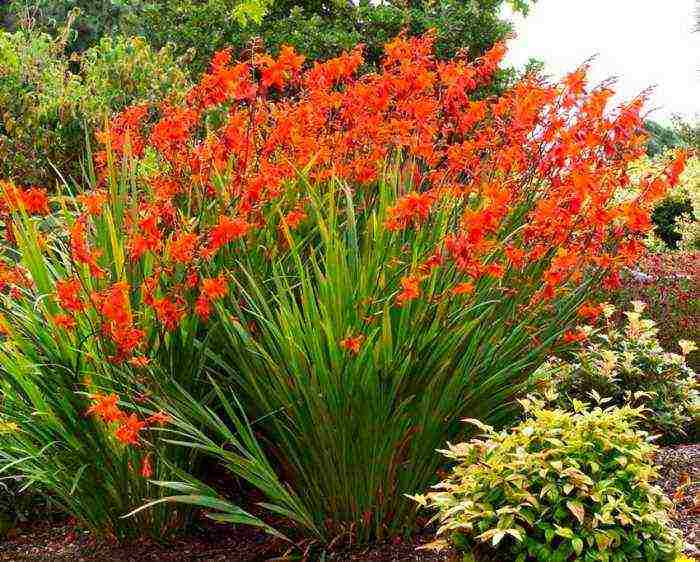
To date, cultural crocosmia is a bulbous herbaceous hybrid perennial, which is called common crocosmia. This hybrid was created by Lemoine in the 19th century, crossing the golden crocosmia and Potts crocosmia. The surface of the small tuber is covered with a reticulum. The height of this plant can vary from 0.4 to 1 meter. It has a branching stem, on which leaf plates of a xiphoid or linear shape are located. There is also a very strong peduncle, which gives the plant a resemblance to a gladiolus. In this regard, crocosmia is also called "Japanese gladiolus", while it must be grown in the same way as the gladiolus itself. The star-shaped flowers are white, orange and yellow and can be up to 5 centimeters in diameter. Dense paniculate inflorescences consist of 3-5 flowers. The fruit is a round-shaped polyspermous capsule.
This plant is very closely related to popular flower crops such as iris, gladiolus, crocus saffron, ferraria and freesia. Crocosmia is most often used to decorate open flower beds, growing in conjunction with plants such as canna, salvia, daylily, rudbeckia and echinacea. This flower is also suitable for cutting, so its inflorescences can stand in water for up to a half moon.
Below, it will be described in detail how to plant and grow crocosmia.And also a lot of useful and just very interesting information about this plant will be given.
Growing crocosmia from seeds

Sowing
For reproduction of crocosmia, you can use seeds or corms. If you decide to start growing from seeds, then the choice should be stopped on the seedling method. The fact is that when sowing seeds in open soil, you can not wait for shoots. Sowing should be done in the last days of February or the first in March. Immediately before sowing, the seeds must be filled with water for 24 hours, while it should be replaced every 6 hours. Then the seeds are sown in a soil mixture, which includes peat, sand, sod earth and humus. Then the container should be covered with foil and rearranged in a well-lit place.
Seedling
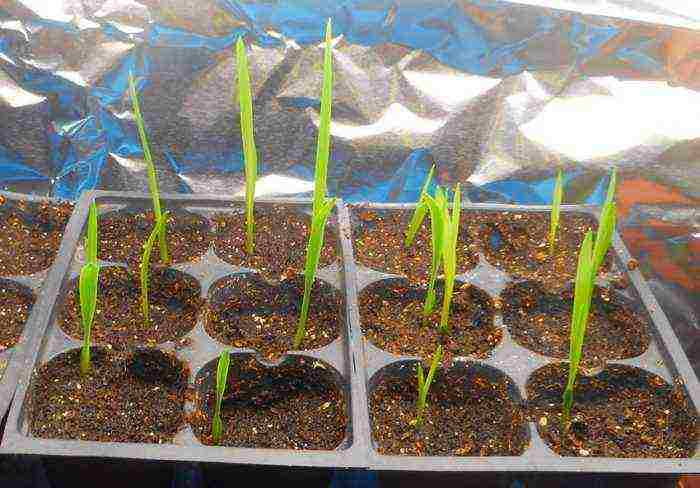
It is necessary to care for crocosmia seedlings in almost the same way as for other flower crops. After the first seedlings appear, the shelter should be removed. Watering should be done as the upper layer of the substrate dries up, and you will also need to systematically carefully loosen its surface to a shallow depth. Try to choose such a watering regime so that the substrate is a little damp all the time, but at the same time water does not stagnate in the soil, as this can contribute to the development of a fungal disease.
Picking
When the second or third real leaf appears at the plants, they will need to be dived into separate pots. They will grow in them until they are transplanted into the garden. Half a month before planting plants in open soil, they will need to be hardened. To do this, they need to be briefly transferred to fresh air, while the procedure should become longer and longer every day.
Planting crocosmia in open ground
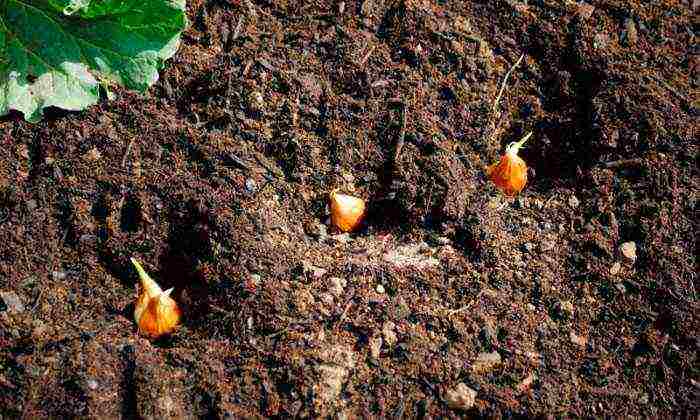
What time to plant
Transplanting seedlings into open soil should be done in the last days of April or the first in May, while the earth should warm up to 6-10 degrees. In order to see the bloom of crocosmia, it should be planted in an open, well-lit area, otherwise flowers may not appear on it at all. The soil must be permeable, while the groundwater in the place where this plant is grown should not lie too close to the surface of the earth. The fact is that these flowers react extremely negatively to stagnant fluid in the root system. The landing site must be prepared in the fall. To do this, you need to dig up the soil, while for each 1 m2 add a couple of buckets of humus, 40 grams of superphosphate, 100 grams of slaked lime and 20 grams of potassium chloride. In spring, before planting crocosmia, nitrogen-containing fertilizers must be introduced into the soil with obligatory incorporation (30 grams of substance per square meter).
How to plant
Seedlings should be planted in pre-prepared holes, while taking into account that the distance between the bushes should be from 10 to 12 centimeters, and the length of the row spacing should be from 25 to 30 centimeters. When the seedlings are planted, they should be watered. For the first two or three days, she will need shelter from the scorching rays of the sun. Such a plant, obtained from a seed, will begin to bloom only after 3 years from the moment of germination. However, if optimal conditions are provided for him, then it will be possible to admire his beautiful flowers in just 2 years.
Crocosmia care in the garden
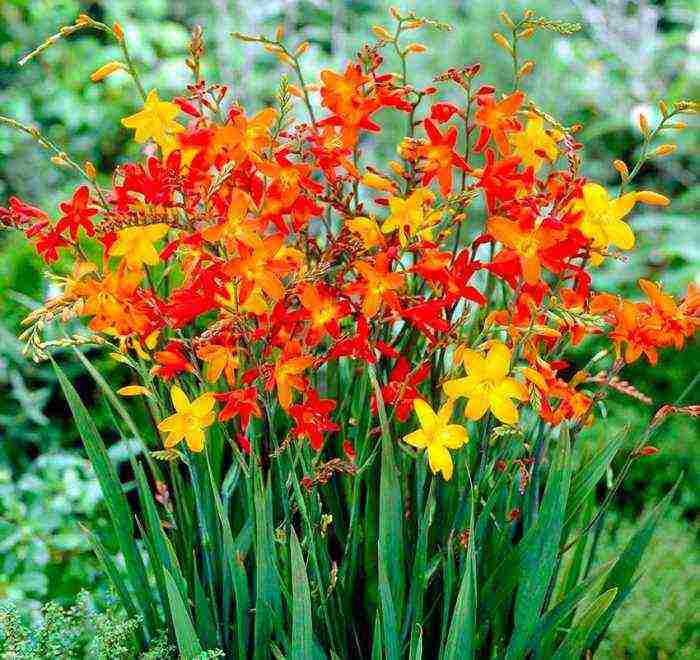
You need to take care of crocosmia in almost the same way as for gladioli. Watering should be abundant and carried out every 7 days. When the water is absorbed into the soil, it is recommended to loosen it to break up the crust that has appeared.
For normal growth and development, such a flower must be systematically fed. In the event that you planted crocosmia on nutrient-rich soil, then you can do without top dressing.But in the event that the soil is poor, then you need to start feeding the plants after the second true leaf is formed, while such a procedure is carried out with a frequency of 1 time per 1.5 weeks. To do this, it is recommended to use an infusion of mullein (1 part of mullein is taken for 10 parts of water), as well as a complete mineral fertilizer (for a liter of water, 2 grams of the product). During budding, such a plant needs a fertilizer containing a large amount of potassium.
Taking care of crocosmia is not at all difficult. As for diseases and pests, if you follow all the rules of agricultural technology, you will not have problems with this plant.
How to propagate
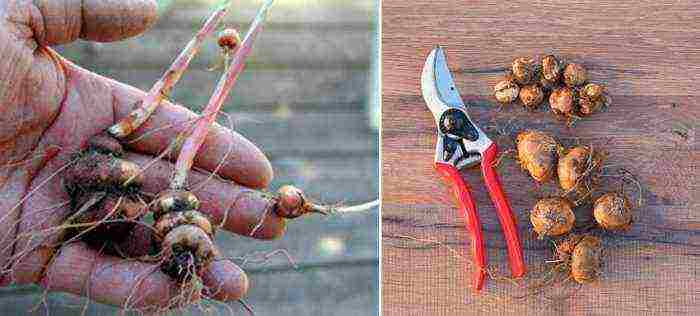
It was already mentioned above that such a flower can be propagated by seeds, and also for this they use a vegetative method. You can read about how to grow crocosmia from seeds above. For vegetative propagation, gardeners use the division of corms. Every year, about one adult corm grows to 5 children, which begin to bloom next year. At the same time, the parental corm continues to grow children. In this regard, when growing such a flower, it should be borne in mind that it will be systematically necessary to divide and plant the corms.
Division is usually done after the planting becomes very dense. To do this, in the spring, you need to dig up the corm and carefully tear off the children from the parent bulb, which are then planted in a permanent place. At the same time, it is recommended to plant children in the same time period as planting seedlings, namely, in the last days of April or the first days of May. If there is a desire, then for a start, the separated children can be seated in individual pots, where they will grow until May or June. And then they will need to be transplanted into open soil.
Pests and diseases
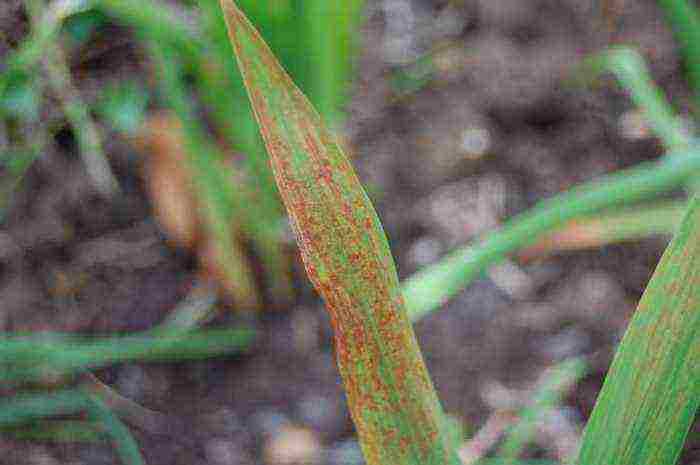
Crocosmia is highly resistant to diseases and harmful insects. But if you take care of it incorrectly or allow stagnation of fluid in the root system, then it can be affected by diseases such as:
Fusarium
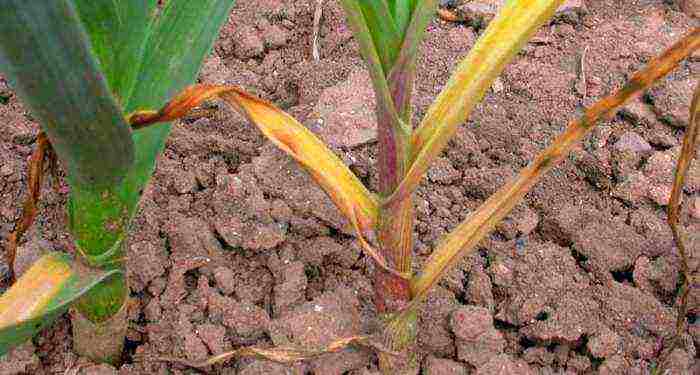
In an infected bush, leaf plates begin to turn yellow, they gradually dry out and fall off. There is also a curvature of peduncles and deformation of flowers, while a change in their color is observed.
Gray rot
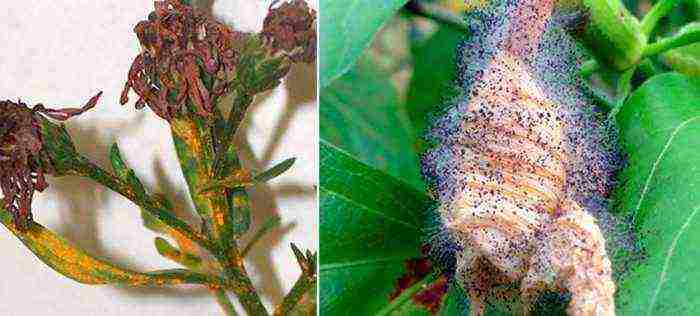
A fluffy bloom of gray color appears on the surface of the corms.
Herbiness (jaundice)

First, the tips of the leaf plates turn yellow, and then a straw shade appears on the leaves. As a result, the bush dies. This disease is viral, and it is carried by leafhoppers.
If the bush is infected with fusarium, then it should be treated with a fungicidal agent. It is recommended not to fight with gray rot, but to prevent its appearance. If the bush is struck by jaundice, then it will be impossible to cure it, because an effective remedy has not yet been found for this kind of disease. For preventive purposes, in order to prevent infection of crocosmia, it is recommended to plant it exclusively according to the rules of agricultural technology. Also, before sowing or planting, it is necessary to process the planting and seed material with a solution of potassium manganese (1%) before sowing or planting. You also need to systematically change the planting site of such a plant.
Crocosmia can be especially affected by such harmful insects as: thrips, bears, and even spider mites.
Medvedki

Such insects eat corms, and they lay offspring in the ground at a depth of ten centimeters. In order to destroy them, it is recommended to make special traps. At the beginning of the autumn period, you need to dig a hole half a meter deep and put fresh horse manure in it. In order not to forget where this place is, put a pole. After some time, bears in the soil should settle in the manure for the winter. You just have to dig a hole and destroy them.
Thrips
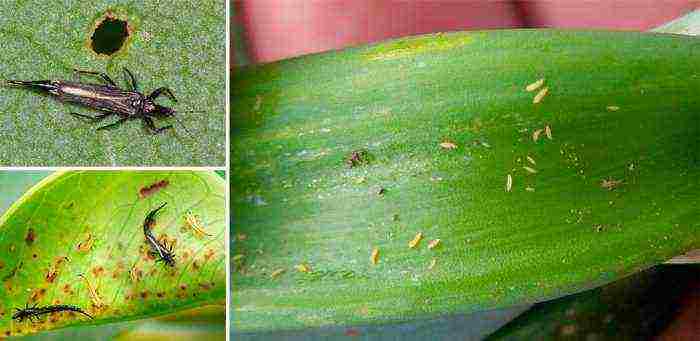
They suck vegetable juices from crocosmia. In the affected specimen, discolored spots, stripes or streaks form on the leaf plates. Shoots become crooked, leaves fall off, and flowers become less attractive. To get rid of such insects, you should process the bush with such means as: Fitoverm, Karbofos, Agravertin, Actellik or Confidor, while you must follow the recommendations given in the instructions.
Spider mites

They only settle on plants during long periods of drought. These pests also suck out plant juices from the flower. It should also be remembered that such pests are carriers of viral diseases that cannot be cured. To destroy such insects, you should use the same drugs that are recommended for the fight against thrips.
Crocosmia after flowering
Seed collection

In the event that you already have crocosmia growing, then it makes no sense to collect its seeds, since it is much easier and more efficient to propagate such a plant by dividing the corms. And in order to grow such a flower through seedlings, it is recommended to use seeds purchased at the store.
How to prepare for wintering
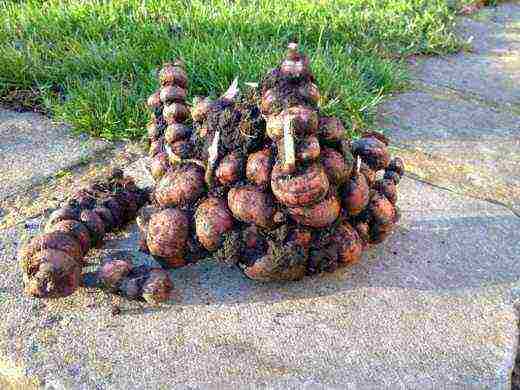
If you grow crocosmia in a region with frosty winters, then it is recommended to extract the bulbs from the ground in autumn. It should be borne in mind that they must be dug out no earlier than the second half of October, otherwise the children will not have time to form normally. Corms should be thoroughly dried, while placing them in a cool (about 10 degrees) room with good ventilation. They should be stored in the same way as gladiolus bulbs.
In the event that crocosmia is grown in a region with mild winters, then it will not be possible to dig it out for the winter. However, in autumn, the site will need to be sprinkled with a layer of mulch, while wood shavings, spruce branches or dried leaves are placed on it.
If the cultivation takes place in the southern region, then the site can only be covered with dried leaves in autumn, while the layer thickness should be about 20 centimeters. A film is laid on top of the leaves. When the frosts are left behind, the shelter will need to be removed, while the old sheet plates should be cut to the ground surface.
Types and varieties of crocosmia with photos
There are approximately 55 natural species of crocosmia. Below will be a description of the most common species cultivated by gardeners.
Crocosmia golden (Crocosmia aurea)

This species is native to the Republic of South Africa. The leaf plates have a xiphoid or linear shape, and the flowers have a rich orange-yellow color. Flowering in this species is observed at the beginning of the autumn period. It has been cultivated since 1846. There are several forms that have flowers of red, orange and yellow.
Crocosmia masoniorum
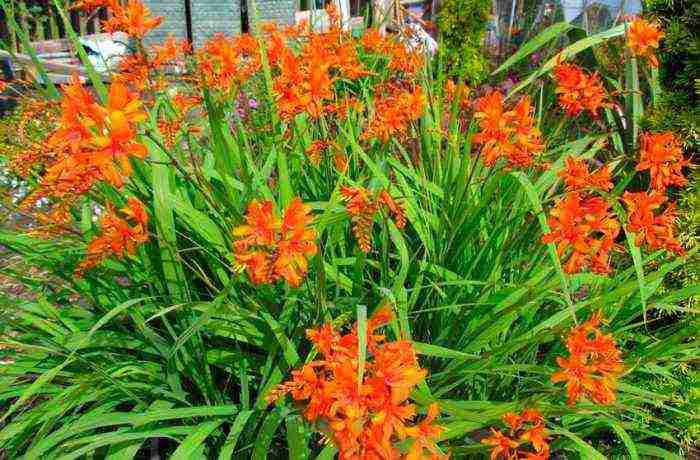
A compact bush in height can reach from 0.6 to 0.8 meters. Ribbed leaf plates of a xiphoid shape in width can reach 5 centimeters. The small flowers are rich orange in color, and they are part of the horizontal deviating racemose inflorescence. Flowering occurs in mid-summer. This species is the most frost-resistant in comparison with the rest.
Crocosmia paniculata
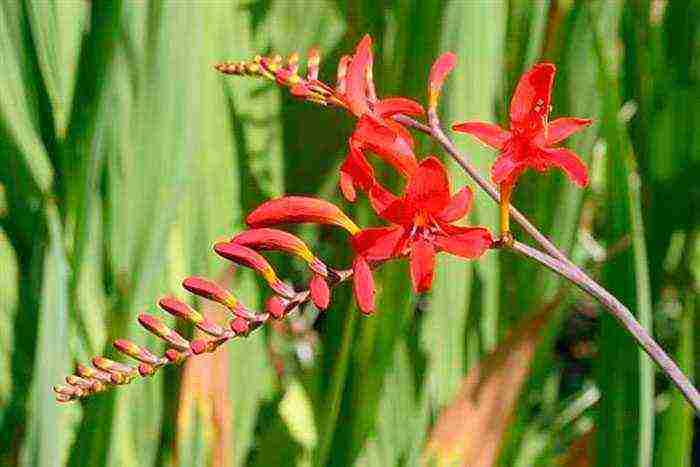
The species is tall, so the bush can reach a height of one and a half meters. The sheet plates are corrugated. This species is the earliest flowering, while flowering is observed in the second half of June. Small flowers of rich orange color are collected in panicle inflorescences.
Crocosmia pottsii
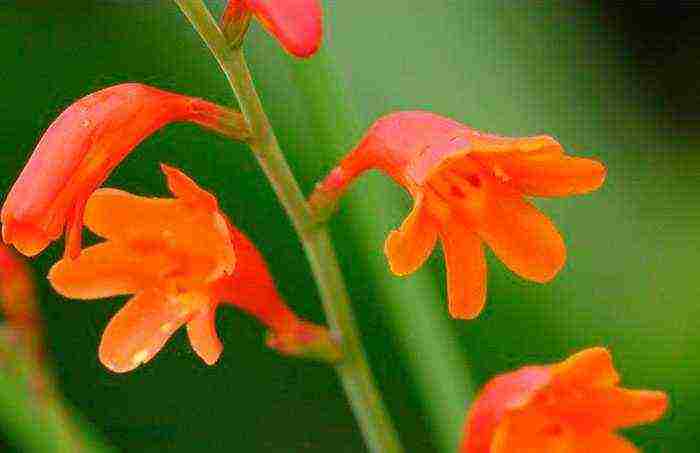
Under natural conditions, it can be found in Africa, while this species prefers to grow in swampy areas.In this regard, it is recommended to plant it in a shaded place, in which the soil will not dry out very quickly. The leaves of this species are narrow and smooth, the flowers are small in size.
Crocosmia ordinary (Crocosmia crocosmiiflora), or garden montbrecia

This plant belongs to the first crocosmia garden hybrids. It was created by Lemoine in 1880, while for crossing he used the golden crocosmia and Potts crocosmia. The height of the bush can be up to 100 centimeters. There are thin branched shoots, narrow erect leaf plates of a wide-linear or xiphoid shape and a pale green color. Small red-orange or yellow flowers are funnel-shaped, and they are part of paniculate inflorescences. Flowering is observed in July or August.
Breeding work on crocosmia is ongoing. So, more than 400 cultivars have already been created. The most popular ones are:

- Emily Mackenzie... The height of the compact bush reaches 0.6 meters. The upright arrows have a large number of brownish-orange flowers, which have a speck of bright color in the middle.
- Crocosmia Lucifer... The bush can reach a height of 150 centimeters. On its straight peduncles there are deep red flowers. This variety has a high frost resistance and if the winters are not too frosty in the region where it is grown, then the corms of such a plant can be left in the soil for the winter.
- George Davidson... The bush reaches a height of about 0.7 meters. Its amber yellow flowers look very impressive against the background of dark green leaves. This plant is great for cutting. Bloom is observed in July and August.
- Red King... The middle of deep red flowers is colored orange.
- Spitfire... The height of the bush can reach up to 0.6 m. Flowering is observed from August to the last days of September. The flowers are colored fiery orange.
- Tangerine queen... The bush can reach a height of 1.2 meters. The color of the flowers is rich orange.
Also excellent for decorating flower beds are such varieties as: Babylon, Golden Fleece, Star of the East, Norwich Canari, Mistral, Vesuvius, Bouquet Parfait, Lady Oxford, Reingold, Heath Magesti, Lady Wilson, Aurora, France Hals, Jace Coy, Lady Hamilton and etc.
Crocosmia is a graceful plant. Belongs to the Iris family. This extraordinary beauty has moved to us from distant warm Africa. Among flower growers, the plant occupies a special place due to its ability to maintain magnificent beauty until the first frost. And to get a full-fledged mature flowering, it is necessary to study in detail the topic: Crocosmia planting and care in the open field.
Crocosmia flowers description, photo
The popular name of the culture is montbrecia. In European flower gardens, it became widespread at the start of the 19th century. Unpretentious care allows you to leave the plant to winter in a flower bed. The main factor for good growth and flowering is the correct choice of soil and planting zone.
The flower belongs to the category of perennials, is a bulbous plant. The tuber is covered with a shell consisting of many layers. The aerial part is represented by branched stems with densely growing linear leaves. It can reach a height of 60 cm to 1.5 m, it all depends on the specific variety, its characteristics. The inflorescences have a diameter of 4 cm, funnel-shaped, gather in inflorescences of 5 small flowers. The color scheme of the inflorescence is bright and rich. It can be fiery orange, snow white, dark red or lemon yellow.
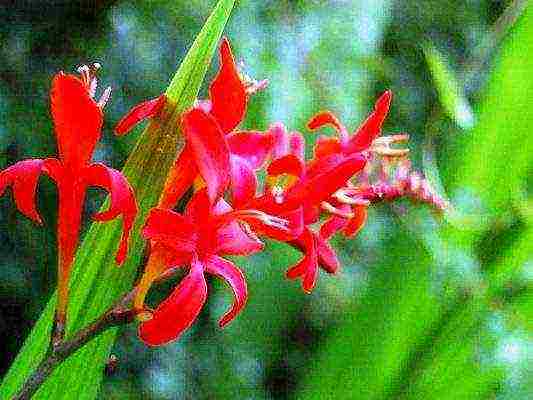
The culture is considered to be related to a variety of plants. So, for example, can be ranked among irises, gladioli, crocuses, freesia and even ferrari.
Interesting! Translated from Greek means "crocus scent".This name is justified by a scent strongly reminiscent of the scent of saffron. There is a middle name - Japanese gladiolus. This name is associated with the visual similarity of the peduncle with the gladiolus.
Types and varieties of crocosmia
More than 50 species are known in the wild, but the following species are most popular among gardeners:
- Golden. The homeland of the species is South Africa. It has xiphoid leaves, juicy two-colored inflorescences of an orange-yellow hue. It begins to bloom in September.
- Massonorum. It is a bush plant 60-80cm in height. The leaves have a slight ribbing, small flowers of a rich orange hue are collected in a flower cluster. Flowering begins in mid-summer. This variety is particularly resistant to winter frosts.
- Paniculata. Bushes of this species reach a height of 1.5 m, being a tall variety of culture. Among all species, it is considered the earliest flowering. The buds begin to bloom by mid-June, delighting their owners with bright orange panicles.
- Potts. It grows mainly in swampy areas. It has narrowish, perfectly smooth leaves, small flowers. It will feel comfortable enough in a shaded area with slowly drying soil.
- Garden Montbrencia (ordinary). One of the first hybrid varieties. The variety was bred in 1880 by crossing the Potts and golden species. Flowering begins towards the end of summer. It can reach a height of 1 m, has thin branched stems, erect leaves, small buds of a yellow or red hue.
The most famous hybrid varieties are:
- Emily Mackenzie - 60 cm compact bush with dense foliage. The upright stems show off orange-brown buds with a special bright spot in the middle;
- Lucifer - a 1.5 meter bush has even peduncles of a rich scarlet tone. It is immune to frost, which allows it to be left to winter in the ground;
- George Davidson - 70 cm variety has an amber color with flowers that stand out especially colorfully in contrast to the rich green dense foliage. Great for cutting, matches perfectly with other flowers in the bouquet;
- Red King - famous for its dazzling red inflorescences with an orange core;
- Spitfire - blooms in August - September, pleases the eye with rich red buds, reaches a height of 60 cm;
- Mandarin Queen - this variety can be up to 120 cm high, gained popularity for its bright orange inflorescences.
Informative! Considering the continuation of breeding work and the receipt of new varieties of hybrid varieties, today there are more than 400 varieties.
Growing crocosmia from seeds
Growing with seeds is quite troublesome. A successful process requires experience and patience. Budding occurs only two years after planting the seeds, but beauty compensates for all the labors.
Sowing crocosmia
For propagation from seeds, it is still recommended to give preference to the seedling propagation method. In theory, it is possible to plant seeds directly into the ground, but the likelihood of sprouting is very low.
In late February - early March, the seed is pre-soaked for 24 hours, making a fluid change every 6 hours. Then the seeds are planted in a suitable soil, mixed from earth, sand, peat, humus. To avoid temperature drops, the crops are covered with plastic wrap, stored in a warm, well-lit place until the first shoots appear.
Crocosmia seedlings care
Seedling care involves carrying out standard procedures. When the first shoots appear, the film is removed. Regular watering of young shoots is carried out. If necessary, gently loosening the soil is carried out.
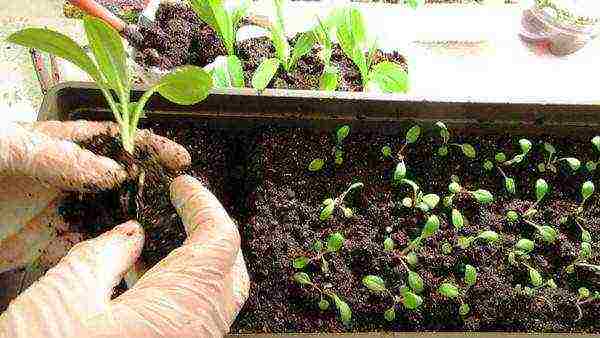
Crocosmia pick
The picking process is carried out after the appearance of the first pair of full-fledged leaves. Seedlings are transferred in individual or general containers of small diameter.These containers will become the permanent residence of the shoots until the seedlings are planted. Two weeks before planting the container with seedlings, it is recommended to take it out for several hours in fresh air. This procedure will allow you to harden the shoots, prepare them for new temperature conditions.
Important! Avoid excessive soil moisture. Bulbs do not like excess moisture, they can simply rot.
Planting crocosmia in open ground in spring
The seedlings calmly endure the transplant, quickly build up the root system, but when transplanting, you still need to adhere to certain rules. It is the observance of simple instructions that is the key to healthy growth and abundant flowering.
When to plant crocosmia in the ground
The transfer of seedlings to the ground should be carried out in April - May, after the soil warms up to a temperature of over 10 degrees. To obtain abundant flowering, it is recommended to plant shoots in a well-lit place with loose, moisture-permeable soil.
Choosing a place for planting, soil characteristics
The landing site is being prepared in the fall. The soil is fertilized in advance. For fertilization, use 100 g of slaked lime, 20 g of potassium chloride, 2 buckets of humus, 40 g of superphosphate for each square meter of soil.
How to plant crocosmia
Seedlings should be planted in pre-prepared holes, observing a distance of 10 cm between holes, 30 cm between rows. After planting, the soil is well moistened, slightly covered from the rays of the sun. The bushes grown by seedlings will give color only in the third year. But when creating the most favorable conditions, flowering can please the second.
Remember! Groundwater should not pass too close to the planting site. The flower does not tolerate excess moisture, does not tolerate stagnant water.
Crocosmia care in the garden
Care rules do not have complex features. Watering is carried out once a week, abundantly moisturizing the soil. After the liquid has been absorbed, it is necessary to carry out weeding to loosen the soil and prevent the formation of an earthen crust.
An important point in caring for a flower bush is regular feeding. You can do without feeding only if the seedlings are planted in fertile soil. But if your soil lacks nutrients, then you need to feed it after 10 days.
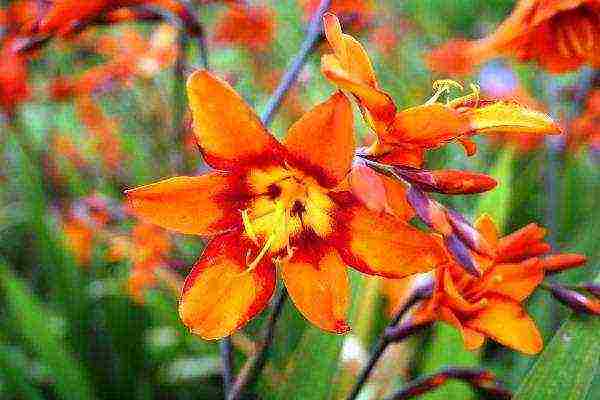
For fertilization, an infusion of mullein is prepared, observing the proportions of 1:10 with water. Mineral fertilizer is also used, preparing a solution at a ratio of 2 g of fertilizer per 1 liter of liquid. With the onset of the budding period, the flower requires fertilizers with a high potassium content.
Reproduction of crocosmia
A plant can reproduce in two ways:
- Seminal. Seeds are planted in advance for seedlings, in the spring they get a full-fledged plant, which is then transferred to a permanent place of residence.
- Vegetative. This method of reproduction is carried out by dividing the tubers. Every year, young babies grow around the mother's bulb, about 5 pieces. Babies are able to bloom the next year, and the mother's bulb continues to grow babies. Growing vegetatively involves systematically dividing and planting the bulbs. When the culture grows, the mother's bulb is dug up in the spring, only the babies are planted. Planting is carried out at the same time as planting seedlings - late April - early May.
Know! Before planting, the children can be planted in a pot, let them grow a little, then transfer the already grown plant to the flower bed, keeping the earthen lump.
Planting and caring for crocosmia in Siberia, Moscow region, in the Urals
Planting dates depend on the region and the specifics of climatic conditions. In Siberia, they are planted by mid-May, in the middle lane - by early May. In the northern regions, it is not recommended to leave the tubers for the winter period, since there is a high probability of winter frost penetration through the soil.
It winters badly in the Moscow region, so you should dig it out for reinsurance. But if bushy plants grow nearby, and the location of the bulbs is covered before wintering, then there is a high probability of safe wintering. Care is no different from standard recommendations.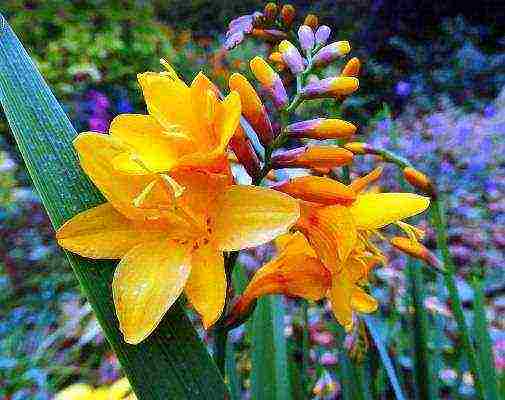
In the middle zone (in the Urals), it begins to bloom in late autumn or early autumn. Gardeners never leave tubers for wintering.
Pests and diseases of crocosmia (treatment)
Shows resistance to most diseases. However, if the watering requirements are violated, the bushes become powerless.
The most common diseases are:
- Gray rot. The bacteria of this disease multiply very quickly in the presence of high humidity, cover the bulbs with a gray bloom, which has a rather unpleasant odor. The main prevention of the disease is compliance with the irrigation regime.
- Fusarium. Fungal infection, accompanied by yellowing of foliage falling, a violation of the shape of the peduncle, a change in the shade of the inflorescences. For treatment, fungicides are used.
- Herbiness. One of the incurable diseases caused by a virus. Spreads a viral infection of the leafhopper. Distinctive characteristics of the disease are yellowed, drying leaves.
Remember! To prevent various diseases, before planting, seeds and tubers are treated with a weak solution of manganese (no more than 1%).
Among the pests that often infect a culture, there are:
- Medvedka. An insect that eats tubers. To catch the pest in the fall, you need to dig a hole 50 cm deep, pour manure into the depths, which serves as a bait. At the end of autumn, all pests will gather in the wintering hole. It is during this period that the nest is dug up, the entire family of pests is killed.
- Thrips. These pests feed on the sap of the plant. The presence of pests is accompanied by small colorless spots or stripes. Over time, the leaves dry out, the stems are curved, and the buds crumble. To combat this pest, Conifor, Karbofos, Agravertin are used.
- Spider mite. This pest affects the part of the plant that is above the ground. The mite sucks out the juice, which causes the leaves to fall, completely drying out the entire bush. Any insecticide can be used to control ticks.
Crocosmia after flowering
Further growth and development is influenced by the care of the crop after flowering, the correct preparation of the flower for the winter period. After the end of budding, feeding is completely stopped. So that all forces are directed to the growth of tubers, the stems of the flower are cut off as soon as the buds fade.
Closer to the second half of October, the flower is dug up. By this time, young children have time to fully form. Dry the bulbs in a dry, well-ventilated place. It is recommended to store in peat or sand - so they will be protected from drying out at temperatures above 10 degrees. You can also use the vegetable compartment in the refrigerator for storage.
Important! Children are not separated before storage. Small bulbs dry out quickly. The tubers are kept intact.
How and when to harvest crocosmia seeds
Many gardeners consider collecting seeds impractical, because the culture reproduces well in a vegetative way. If the acquaintance is just beginning, then it is better to purchase factory seeds in specialized stores.
If there is an irresistible desire to collect the seed on your own, then it is important to wait for the time when the seed pods are ripe. Ripe boxes are carefully collected.
Preparing crocosmia for winter
The culture has several hundred varieties, but not everyone shows resistance to frost. The small-flowered variety tolerates winter frosts quite well, but it is important to cover the tubers well. In the southern regions of growth, before wintering, the bushes are mulched with compost, and on top they are covered with dry foliage 20 cm wide.
Large-flowered varieties must be dug up in October. Such varieties grow mainly in northern latitudes, by the middle of autumn they manage to grow viable children. Dug out bulbs should be dried at a temperature of 10 degrees before storage. Then they are put in wooden containers, left in the cellar until the end of winter. The most suitable temperature for storing tubers is + 5 + 8 degrees.
Two weeks before planting, dry stems are cut from the bulbs, the children are separated. For the prevention of infections, you can soak in a light solution of potassium permanganate or other mordant preparation. From those bulbs that hibernated in the soil, they remove the shelter, cut off the old stems and leaves.
For your information! In order to avoid mixing varieties, experienced growers recommend signing the dug varieties, keeping them separate.
The difficulties of growing crocosmia
The plant can suffer from fungal infection if the soil is flooded. Transplanting a flower to a more suitable territory, treating it with a fungicide will help get rid of the disease. The most dangerous for the plant is fusarium. In the presence of this disease, it will not be possible to cure the affected bushes. The only way out is to isolate the plant and destroy it further.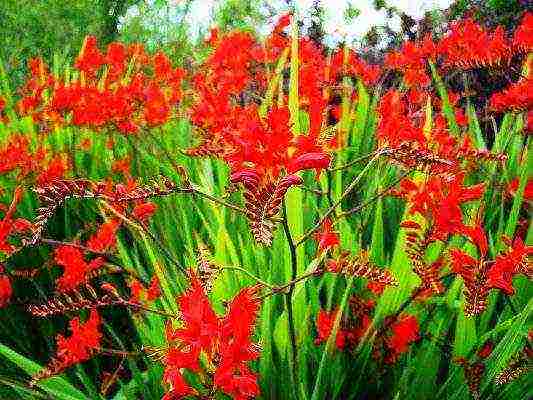
If the tubers are affected by jaundice, then the culture can be saved only by warming the bulb to a temperature of +45 degrees. If you do not fight the disease, the bulbs will become dense, acquire a yellow tint. Germinating stems will also have a yellow color, they will not be able to give flower stalks.
Forum, reviews
Among the many forums dedicated to flowers, their cultivation and reproduction, quite a lot of topics are devoted to crocosmia. Newbies new to this crop ask for advice on growing. More experienced growers share their experience and mistakes.
Basically, the flower is sold in tubers. Many inexperienced flower growers are frightened by the "stoniness" of the purchased material. But this is not a problem for growing, it just takes a little longer for such bulbs to germinate.
A user of one of the forums with the nickname Lobelia shares his experience - tells a personal scheme of safety and preparation for disembarkation. To speed up the germination process, it is recommended to carefully remove the existing scales from the bulb, soak for three days in a wet napkin. Then plant it in a flowerbed in April. Plants all the bulbs, even if not all of the sprouts have "beaks".
Interesting! After wintering in the soil, the flowers sway for a long time before growing. Therefore, you should not rush to dig up a flower bed in frustrated feelings.
Crocosmia in landscape design
The bushes have an original decorative effect, they look spectacular in landscape design. They can be planted singly or in a large group on a flower garden, in the center of the lawn, along the curbs. The combination with echinacea, all representatives of the Liliacea genus, bush chrysanthemums, rudbeckia, dahlias, salvia looks spectacular.
If the flower garden contains mixed plant varieties, then perennial varieties with the same flowering period will be the most advantageous neighbors. In a shady area, the probability of flowering is minimal, but the bushes will give a lot of lush greenery and can become a wonderful background for a flower garden.
Long, straight stems with peduncles are great for cutting. The flower is able to stand for over 10 days, continue to open the previously formed buds.
Due to its unpretentiousness, the possibility of growth in almost any territory, the flower has received widespread approval among gardeners. Even inexperienced beginners are attracted by the flower with its unsurpassed flowering. Crocosmia planting and care in the open field is a topic available to anyone, even a novice gardener. Subject to small rules of care and maintenance, the plant will delight with abundant flowering.
Video: how to properly grow and care for crocosmia
